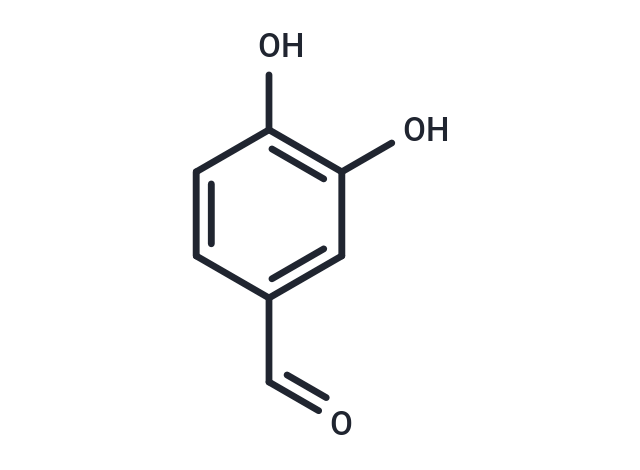Shopping Cart
- Remove All
 Your shopping cart is currently empty
Your shopping cart is currently empty

Protocatechualdehyde (3,4-Dihydroxybenzaldehyde), a natural polyphenol compound derived from radix Salviae Miltiorrhizae roots, exhibits diverse biological activities and finds extensive medicinal applications as an antioxidant, anti-aging, antibacterial, and anti-inflammatory agent.

| Pack Size | Price | Availability | Quantity |
|---|---|---|---|
| 50 mg | $30 | In Stock | |
| 100 mg | $40 | In Stock | |
| 500 mg | $92 | In Stock | |
| 1 g | $133 | In Stock | |
| 1 mL x 10 mM (in DMSO) | $44 | In Stock |
| Description | Protocatechualdehyde (3,4-Dihydroxybenzaldehyde), a natural polyphenol compound derived from radix Salviae Miltiorrhizae roots, exhibits diverse biological activities and finds extensive medicinal applications as an antioxidant, anti-aging, antibacterial, and anti-inflammatory agent. |
| Alias | Rancinamycin IV, Protocatechuic aldehyde, Catechaldehyde, 3,4-Dihydroxybenzaldehyde |
| Molecular Weight | 138.12 |
| Formula | C7H6O3 |
| Cas No. | 139-85-5 |
| Smiles | OC1=C(O)C=C(C=O)C=C1 |
| Relative Density. | 1.409g/cm3 |
| Storage | Powder: -20°C for 3 years | In solvent: -80°C for 1 year | Shipping with blue ice. | |||||||||||||||||||||||||||||||||||
| Solubility Information | DMSO: 50 mg/mL (362 mM) | |||||||||||||||||||||||||||||||||||
Solution Preparation Table | ||||||||||||||||||||||||||||||||||||
DMSO
| ||||||||||||||||||||||||||||||||||||

Copyright © 2015-2024 TargetMol Chemicals Inc. All Rights Reserved.